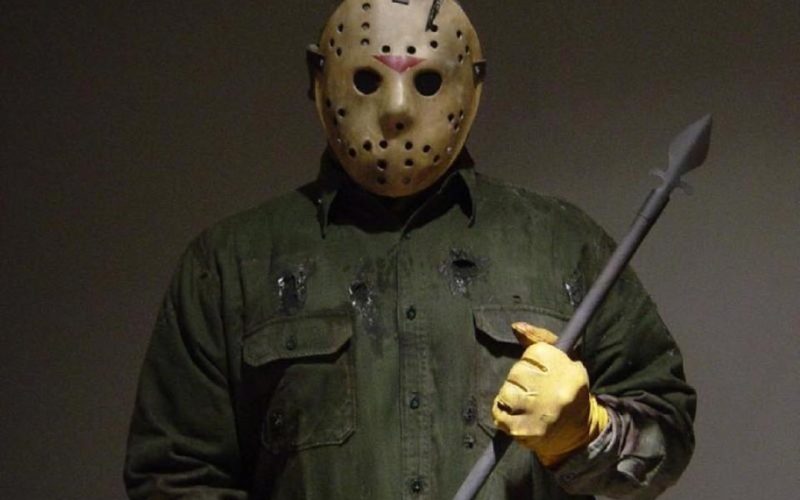The iconic masked killer from Crystal Lake has maintained his grip on horror fandom for over four decades, with renewed interest in his origin story, birthday, and comparisons to other horror legends like William Afton and Freddy Krueger.
The Man Behind the Mask: Jason Voorhees’ Lasting Cultural Impact
Horror movie enthusiasts have long been fascinated by the mysterious character of Jason Voorhees, the hockey mask-wearing antagonist of the “Friday the 13th” franchise. Born on June 13, 1946, according to franchise lore, Jason’s birthday appropriately falls on a Friday the 13th in the fictional timeline – a date that continues to resonate with horror fans worldwide.
The character’s backstory has evolved significantly since his introduction as a drowning victim at Camp Crystal Lake. Initially presented as a young boy who drowned while camp counselors were distracted, Jason later emerged as a seemingly unstoppable killing machine seeking revenge for his death and his mother’s subsequent murder. This transformation from victim to villain has provided endless material for horror analysts examining the psychological aspects of the character.
The hockey mask, which didn’t appear until the third film in the series, has become one of the most recognizable images in horror cinema. What many casual viewers don’t realize is that Jason wasn’t even the main antagonist in the original 1980 film – his mother, Pamela Voorhees, was the killer. Jason’s full emergence as the franchise’s central figure happened in later installments, creating one of horror’s most enduring legacies.
Before the Mask: Jason Voorhees’ Original Appearance
Long before donning the hockey mask that would become his trademark, Jason Voorhees was portrayed with severe facial deformities. The character’s appearance without his mask has been depicted differently across various films in the franchise, but consistently shows a distorted face meant to explain why he was bullied as a child.
In “Friday the 13th Part 2” (1981), viewers got their first glimpse of adult Jason with only a bag over his head. The famous hockey mask didn’t appear until “Friday the 13th Part III” (1982), establishing the iconic look that would define the character for generations of horror fans.
What makes Jason particularly interesting among horror villains is how his physical appearance connects to his origin story. Unlike purely supernatural antagonists, Jason’s character began as a human child with physical differences who suffered rejection and ultimately death due to negligence, adding layers of complexity to what could otherwise be a one-dimensional slasher villain.
Horror Titans Collide: The Freddy vs. Jason Phenomenon
The 2003 crossover film “Freddy vs. Jason” represented a milestone in horror cinema, bringing together two of the genre’s most iconic killers. This long-awaited clash between Wes Craven’s dream-invading Freddy Krueger and the silent, machete-wielding Jason Voorhees fulfilled a fantasy horror matchup that fans had speculated about for years.
The film explored an interesting dynamic between the two killers: Freddy’s calculated psychological torment contrasted with Jason’s relentless, brute-force approach. This fundamental difference in their methods of terrorizing victims highlighted why both characters had remained relevant in horror culture for decades.
The success of “Freddy vs. Jason,” which grossed over $116 million worldwide, demonstrated the ongoing appeal of these classic horror franchises even in an era of evolving horror trends. The film’s popularity sparked renewed interest in both characters and influenced subsequent franchise entries.
Modern Horror Connections: Jason Voorhees and William Afton
Horror enthusiasts often draw parallels between Jason Voorhees and newer horror figures like William Afton from the “Five Nights at Freddy’s” series. Both characters share certain thematic elements: they’re associated with the deaths of children, wear distinctive masks or costumes, and have been resurrected or reimagined across multiple installments of their respective franchises.
While Jason emerged from the slasher boom of the 1980s, Afton represents a more recent evolution in horror storytelling through gaming. The “Five Nights at Freddy’s” franchise, which began as a video game in 2014 before expanding to books and a recent film adaptation, features Afton as a serial killer who targets children at a pizza restaurant entertainment center.
The connection between these characters highlights how horror archetypes evolve while maintaining certain core elements that continue to resonate with audiences. Both Jason and Afton represent the embodiment of childhood trauma transformed into monstrous revenge, though expressed through different media and storytelling approaches.
The Cultural Significance of Jason’s Mask
Perhaps nothing represents Jason Voorhees more than his iconic hockey mask. Originally chosen as a practical prop solution, the mask has transcended its origins to become one of the most recognizable images in horror cinema. The stark white mask with distinctive red markings represents not just a character but an entire era of horror filmmaking.
What makes the mask particularly significant is how it conceals Jason’s humanity while simultaneously creating a blank canvas onto which viewers project their fears. Unlike many horror villains whose faces express emotion, Jason’s masked appearance creates a sense of emotionless, unstoppable force—an effect that has influenced countless horror characters since.
The mask has become so iconic that it frequently appears in popular culture references far removed from the horror genre, demonstrating how thoroughly Jason Voorhees has penetrated mainstream awareness.
As new generations discover the “Friday the 13th” franchise, Jason Voorhees continues to embody a particular type of horror that resonates with fundamental human fears, ensuring his place in the pantheon of legendary screen villains for decades to come.





